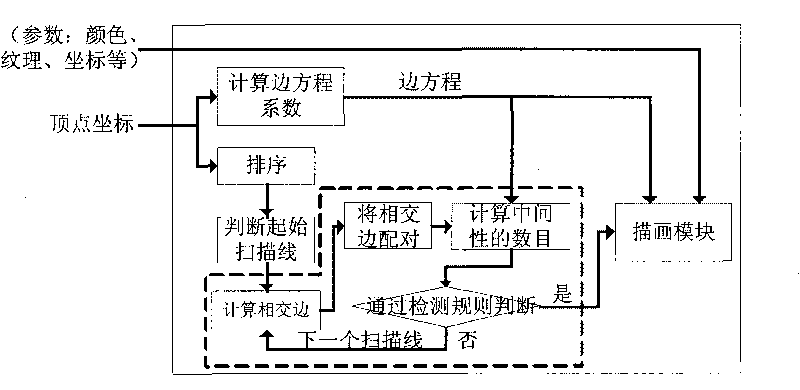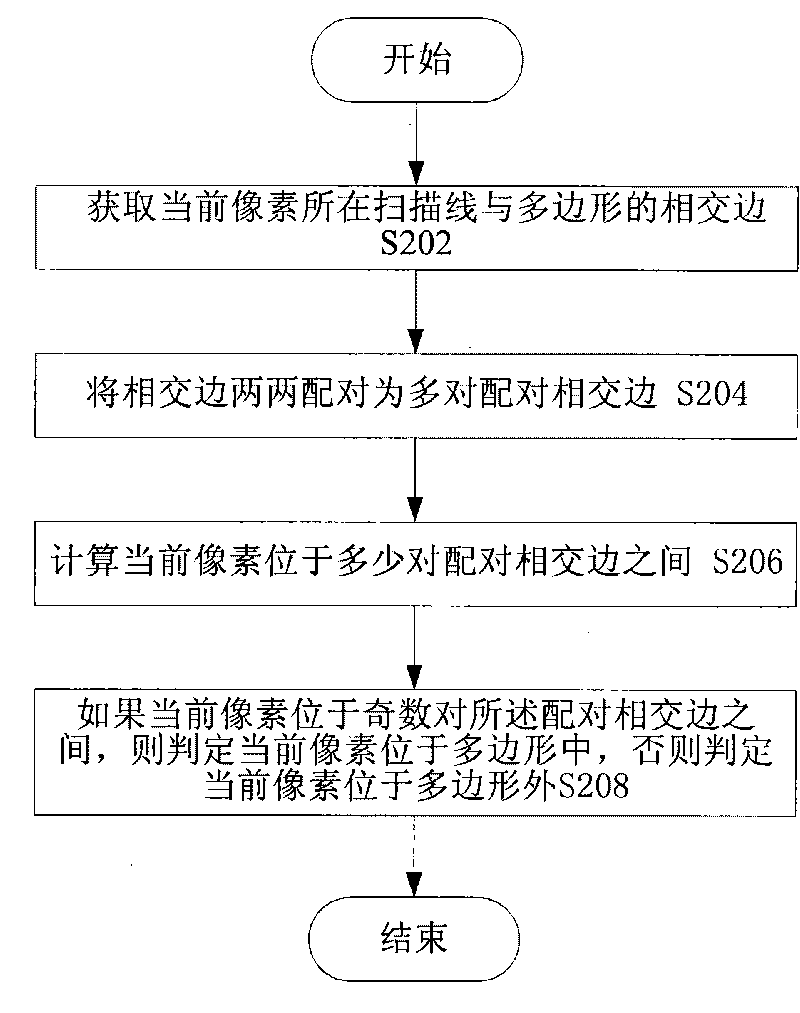Method and system for detecting whether current pixel is located in polygon
A polygon and polygon hole technology, which is applied in image analysis, image data processing, instruments, etc., can solve the problems of large amount of calculation, low efficiency, and low performance, and achieves strong process modularization, easy hardware implementation, and simplified implementation. Effect
- Summary
- Abstract
- Description
- Claims
- Application Information
AI Technical Summary
Problems solved by technology
Method used
Image
Examples
Embodiment Construction
[0021] The present invention provides a method and system for detecting whether a current pixel is located in a polygon. Wherein, in the method and system for detecting whether a current pixel is located in a polygon according to an embodiment of the present invention, the odd-number betweenness rule is applied. The content of the odd betweenness rule is: pair the polygon sides that intersect with the scan line where the current pixel is located into multiple pairs of paired intersecting sides, and if the current pixel is located between odd pairs of paired intersecting sides, it is determined that the current pixel is located in the polygon , otherwise it is determined that the current pixel is outside the polygon.
[0022] figure 1 It is a schematic block diagram of the working principle of the polygon rasterization system to which the method / system for detecting whether the current pixel is located in the polygon according to the embodiment of the present invention is appl...
PUM
 Login to View More
Login to View More Abstract
Description
Claims
Application Information
 Login to View More
Login to View More - Generate Ideas
- Intellectual Property
- Life Sciences
- Materials
- Tech Scout
- Unparalleled Data Quality
- Higher Quality Content
- 60% Fewer Hallucinations
Browse by: Latest US Patents, China's latest patents, Technical Efficacy Thesaurus, Application Domain, Technology Topic, Popular Technical Reports.
© 2025 PatSnap. All rights reserved.Legal|Privacy policy|Modern Slavery Act Transparency Statement|Sitemap|About US| Contact US: help@patsnap.com



